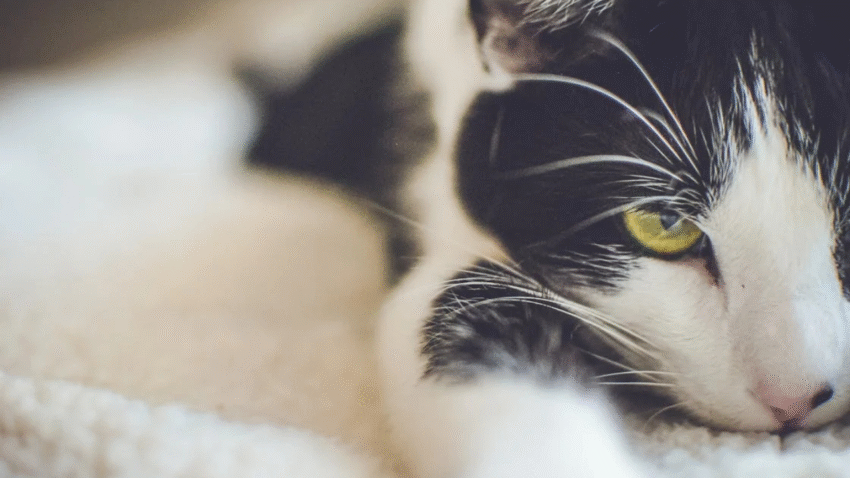Introduction
Think cats can’t be trained? Think again! With the right approach, cats respond extremely well to positive reinforcement. Whether you’re teaching basic commands, improving behavior, or building a deeper bond, this method helps you communicate clearly and respectfully. In this guide, you’ll learn how to use positive reinforcement to train your cat step by step—and why it’s the most effective and humane method available.
Why Positive Reinforcement Works for Cats
Unlike punishment-based training, which can create fear or confusion, positive reinforcement focuses on rewarding good behavior to encourage it to happen again. This method works particularly well with cats, who are independent and respond best to motivation rather than correction. Positive reinforcement builds trust, boosts confidence, and makes training an enjoyable experience for both you and your feline friend.
Step-by-Step Guide to Positive Reinforcement Training
1. Understand What Motivates Your Cat
- Some cats are food-driven, while others may respond better to play, petting, or praise.
- Use small, high-value treats (like freeze-dried chicken or tuna) that your cat doesn’t get at other times.
- Observe your cat’s preferences to determine the most effective reward.
2. Choose a Simple Behavior to Start
- Start with easy, natural behaviors like “sit,” “come,” or using a scratching post.
- Begin training in a quiet, familiar environment without distractions.
- Focus on one behavior at a time to avoid overwhelming your cat.
3. Mark the Desired Behavior Immediately
- Use a clicker or a short verbal marker like “yes!” the instant your cat does the right thing.
- Timing is critical—mark the behavior the moment it happens so your cat makes the connection.
4. Reward Consistently
- Follow your marker (click or verbal cue) with a reward every time the behavior is performed during training.
- Keep sessions short (5–10 minutes), and always end on a positive note.
- If your cat loses interest, stop and try again later.
5. Repeat and Add Cues
- Once your cat consistently performs the behavior, introduce a verbal cue (e.g., “sit” or “come”).
- Say the cue just before the behavior, mark it, and reward immediately.
- Repeat daily until your cat associates the cue with the action and the reward.
6. Phase Out Treats Gradually
- Once the behavior is well established, begin to reduce the frequency of treats.
- Replace with praise, petting, or play intermittently to maintain the behavior without constant food rewards.
- Never stop rewarding entirely—keep reinforcing occasionally to keep the behavior strong.
Common Mistakes to Avoid
1. Using Punishment or Negative Reinforcement
Yelling, spraying water, or using physical correction can cause fear or anxiety. These techniques often backfire and damage the trust between you and your cat.
2. Poor Timing
If you mark or reward too late, your cat may associate the treat with the wrong behavior. Always mark the action as it happens.
3. Skipping Rewards
Without a reward, there’s no motivation. Don’t expect your cat to repeat a behavior just because you want it—give them a reason.
4. Overloading Commands
Teaching too many commands at once can confuse your cat. Focus on one behavior at a time and only move on once it’s consistent.
5. Inconsistent Training
Training only once a week won’t yield results. Consistency is key. Aim for daily short sessions and stick with the routine.
Extra Tips & Recommendations
- Use a Clicker for Precision: Clicker training helps create clear communication. Your cat learns to associate the sound with a reward and knows exactly what behavior earned it.
- Start with Natural Behaviors: Reward your cat for using a scratching post, sitting calmly, or coming when called. These are easier to train and reinforce.
- Create a Training Zone: Use the same area in your home for training sessions to reduce distractions and build a training habit.
- Train Before Mealtime: A slightly hungry cat will be more food-motivated and eager to participate.
- Be Patient: Cats aren’t dogs—they learn at their own pace. Stay calm and encouraging, even if progress seems slow.
Conclusion
Positive reinforcement is the most effective and humane way to train your cat. By rewarding the behaviors you want and staying consistent, you’ll build trust, reduce unwanted habits, and even teach fun tricks along the way. Whether you’re raising a kitten or retraining an adult cat, it’s never too late to start using this method to transform your cat’s behavior—and your relationship.
With a little patience and the right rewards, your cat can become a cooperative and confident companion!
